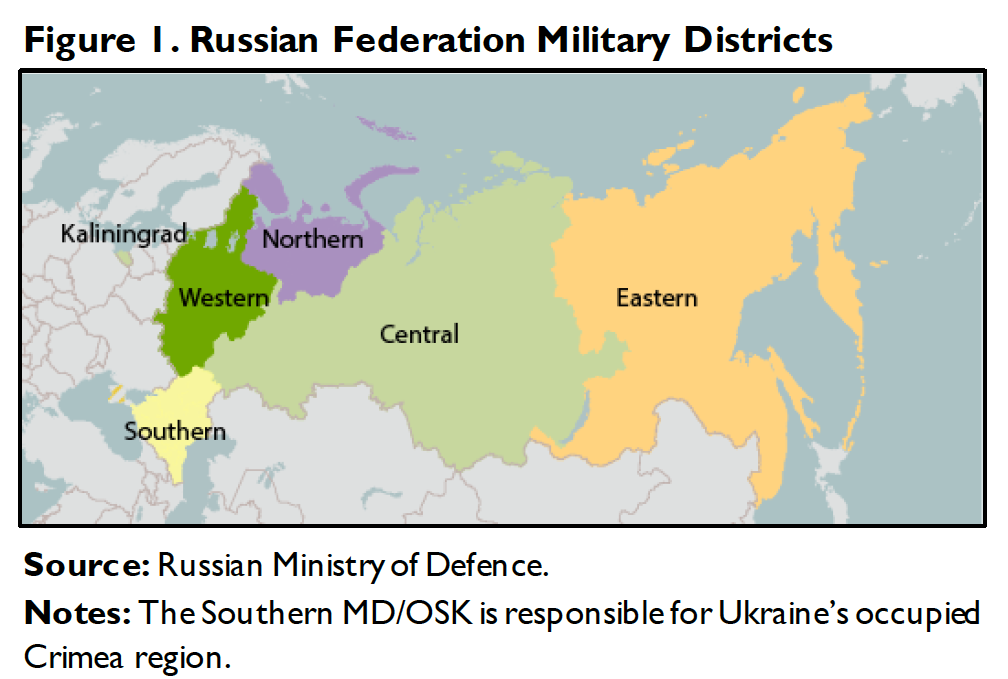The following is the June 30, 2020 Congressional Research Service report, Russian Armed Forces: Capabilities.
Since 2008, Russia has sought to modernize its military and engaged in several armed interventions outside its borders. The 2018 U.S. National Defense Strategy prioritizes “long-term strategic competition” with Russia (and China). To help guide policymaking in response to challenges posed by Russia, Members of Congress may have an interest in assessing the capabilities of the Russian Armed Forces. This report briefly describes Russia’s current military capabilities, including strengths and weaknesses.
Defense Budget and State Armament Plan
Official figures suggest Russia’s military expenditures have ranged between $60 billion and $65 billion a year, or roughly 4% of its gross domestic product (GDP). However, the extent of defense spending may be greater if assessed on the basis of purchasing power parity rather than market exchange rates.
Russia’s long-term defense spending priorities are detailed in State Armament Plans (GPVs), which run in 10-year increments. GPV 2020, which ran from 2011 to 2020, focused on increasing the military’s overall share of modernized equipment to 70%. The newest plan, GPV 2027, calls for total spending of about $330 billion (in 2018 dollars) and 3%-4% of GDP from 2018 to 2027.
Command and Control
Russian military reforms have emphasized the streamlining of command and control structures. Russian forces are organized into five military districts (MDs) and operational/joint strategic commands (OSK; see Figure 1). Russia also has created a Moscow-based central command center, the National Defense Management Center.
Over the last decade, Russia has significantly changed its ground forces. Recruiting professional soldiers has increased, along with upgrading heavy artillery, missile artillery, and electronic warfare units. Additional priorities have included reconnaissance, communication, and the creation of permanently ready units at full staffing levels. Ground forces emphasize mobility and are increasingly capable of conducting short but complex, high-tempo operations. At the same time, Russian ground forces continue to rely on conscription, multiple types of similar equipment, and relatively limited personnel and units to guard Russia’s expansive borders.
Russian ground forces are organized into 11 combined arms armies, one tank army, and four army corps. Russia’s most advanced capabilities are in the Western Military District, and the Southern Military District appears to have the most competent units. Russian units exhibit a mixture of division and brigade structures; brigades are utilized primarily in regions or areas where full divisions would be unwieldy. Both generate ad hoc, task-specific Battalion Tactical Groups, which have artillery and air defense units attached and can be combined with other units as needed. Even with a focus on permanent readiness, however, only a few subunits can be considered deployable.
Recruiting professional soldiers has been a priority. Conscription is unpopular and, at 12 months, considered too short by the Russian military to effectively train new conscripts. Most conscripts occupy secondary support roles, although in most maneuver units conscripts comprise up to one-third of personnel.
The Russian military’s experiences in Ukraine and Syria have reaffirmed for it the importance of massed artillery, rocket fire, and armored forces. However, ground forces have been a relatively low funding priority in Russia’s modernization; most of these efforts went into upgrading existing platforms, which decreased standardization across units and increased maintenance costs.
Download the document here.






